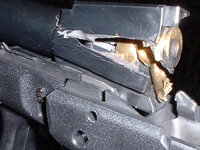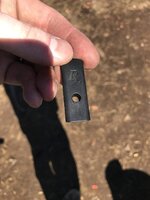- Messages
- 1,359
- Reactions
- 2,348
One other thought about weak crimps...
In addition to bullet setback, there's also the possibility of inertia driving the bullet forward into the lands, just like a kinetic bullet puller.
I don't know which situation would cause the most pressure, but it's something to think about.
In addition to bullet setback, there's also the possibility of inertia driving the bullet forward into the lands, just like a kinetic bullet puller.
I don't know which situation would cause the most pressure, but it's something to think about.













